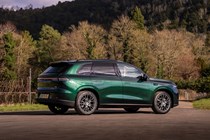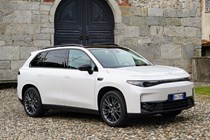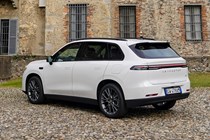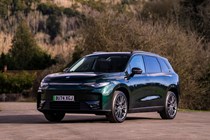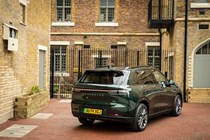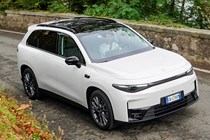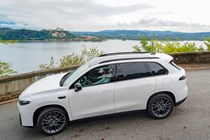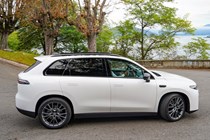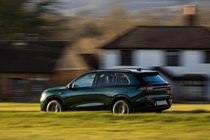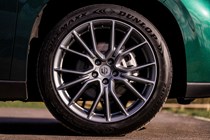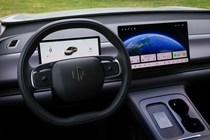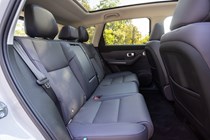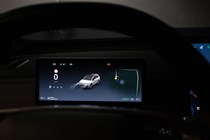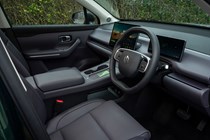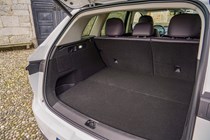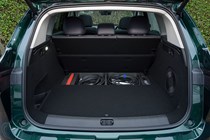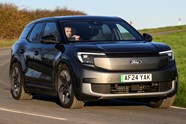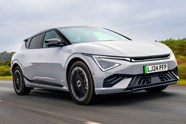LEAPMOTOR C10 review
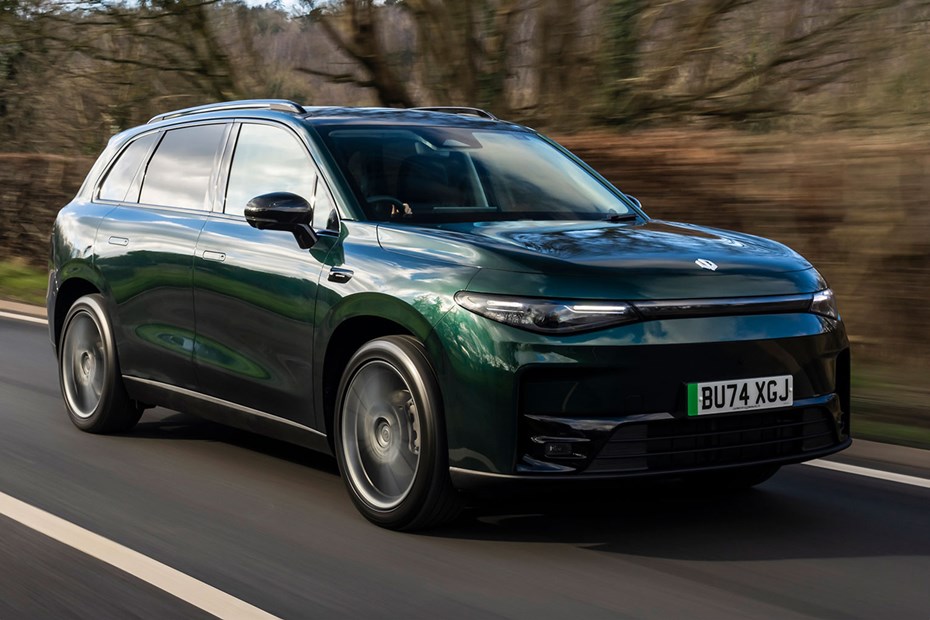
At a glance
| Price new | £36,510 |
|---|---|
| Used prices | £25,178 - £29,700 |
| Road tax cost | £195 |
Get an insurance quote with

|
|
| Fuel economy | Not tested to latest standards |
| Range | 261 miles |
| Number of doors | 5 |
| View full specs for a specific version | |
Available fuel types
Fully electric
Pros & cons
- Cosmically vast interior
- Loads of standard equipment
- Decent build quality
- Slightly choppy ride
- Uninspiring performance
- Complicated touchscreen
LEAPMOTOR C10 SUV rivals
Overview
The Leapmotor C10 is a brand-new entrant to the electric family SUV segment. It’s a new Chinese EV manufacturer whose cars are being distributed in the west by Stellantis (now that the latter has spent £1.25 billion on acquiring a 21% stake in the former’s business).
The C10 is the flagship of the range – and it’s joined by the T03 electric city car, bookending Leapmotor’s model range. The brand is planning a pretty brisk expansion strategy, however, as these two cars will be joined by a Hyundai i20-sized hatchback, a Ford Puma-sized SUV and a Volkswagen Tiguan-rivalling SUV by the end of 2026. That’s aggressive.
Leapmotor is facing some pretty strong competition, though. The C10 is wading into a very competitive and saturated marketplace dominated by the likes of the Ford Explorer, Skoda Enyaq and utterly brilliant Renault Scenic. So, why would anyone buy a car from an unproven manufacturer when there are already so many great alternatives on sale?
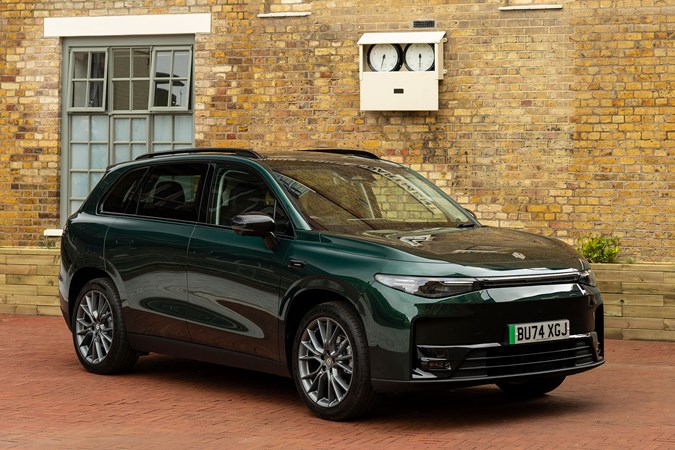
One word. Value. Prices for the Leapmotor C10 start from £36,500. That’s about the same as an entry-level Renault Scenic, but you’re getting far more standard equipment by opting for the newcomer. I’m talking a 14.6-inch touchscreen, a wireless smartphone charger, an enormous panoramic sunroof and a heated steering wheel. You’d need to spend upwards of £45,000 to get the same amount of equipment on a Scenic.
Keep reading to find out whether the value-driven C10 has what it takes to topple its established European rivals, or whether it’s just another attractively priced also-ran in the turbulent EV market. To find out more about how I formed the opinions I’m about to express in this review, head over to our how we test cars explainer page.
What’s it like inside?
Utterly enormous. Space in the back is bordering on comical, with enough room for a six-foot-tall adult to stretch out behind a similarly tall driver like they’re lounging on their sofa at home. Any children back there would need a megaphone to get hold of those up front.
Shoulder room is generous enough to allow three adults to sit comfortably alongside each other on the rear bench and headroom is plentiful everywhere. Plus, despite the cavernous amount of space in the rear, you still get 435 litres of boot space with the rear bench in place. That expands to 1,410 litres with it folded flat.
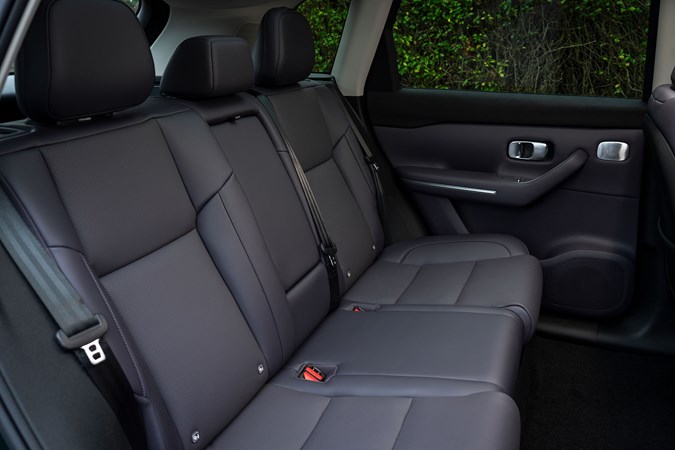
We’re less impressed by the cabin design. It’s a rather banal, derivative layout that takes heavy design cues from Tesla. The dashboard is almost completely buttonless, being dominated by a vast touchscreen controlling almost everything on the car.
Like most Chinese cars, the screen is a confusing maze of menus and sub-menus. I found it quite difficult to use when moving – and some of the technology on the screen simply didn’t work. The sat-nav, for example, couldn’t adjust its route to compensate for the fact that I had to divert around a burning lorry. I had to revert to manual sign-reading.
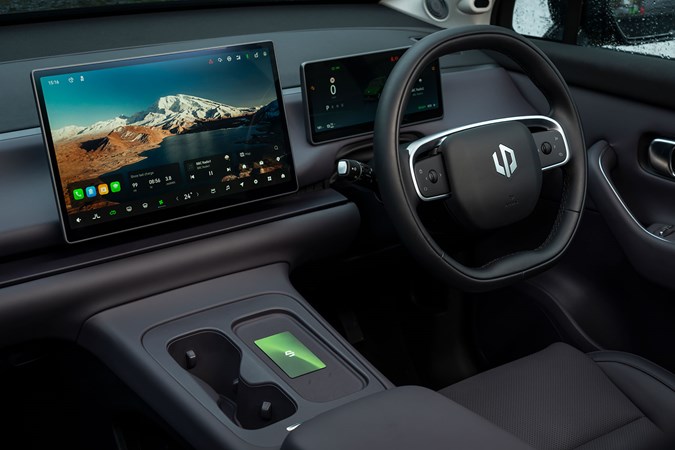
At least the C10’s has been screwed together well. The material choice is a little odd – most of the cabin is covered in a textured blue faux leather that feels closer to rubber – but none of the interior panels squeaked or rattled, even after subjecting them to some of Sussex’s worst roads. Plus, they’re all quite easy to wipe down, which is ideal for messy family life.
Comfort
Being spacious is easy. You just make a car that’s really big. But being comfortable? That’s a little more challenging. Happily, Leapmotor has managed to nail the brief. The C10 comes with heated and electrically adjustable front seats as standard, while the panoramic sunroof makes the already commodious cabin feel even airier.

My colleague, Seth Walton, had this to say about the C10’s seats: ‘They’re reasonably comfortable, but they’re limited by the texture of the material they’re trimmed in. If luxury in the housing market is defined by light and space, then the C10 is a town house on Holland Park, only with carpets, wallpaper and kitchen counters provided by the Yokohama Rubber Company. Then arranged by Elon Musk.’
Safety
Euro NCAP has tested the Leapmotor C10 – and it achieved the maximum five-star rating. The testers were particularly impressed by its ability to protect its child occupants. In both the frontal and lateral impact tests, both the six-year-old and ten-year-old dummies emerged from their wreckages completely unscathed.
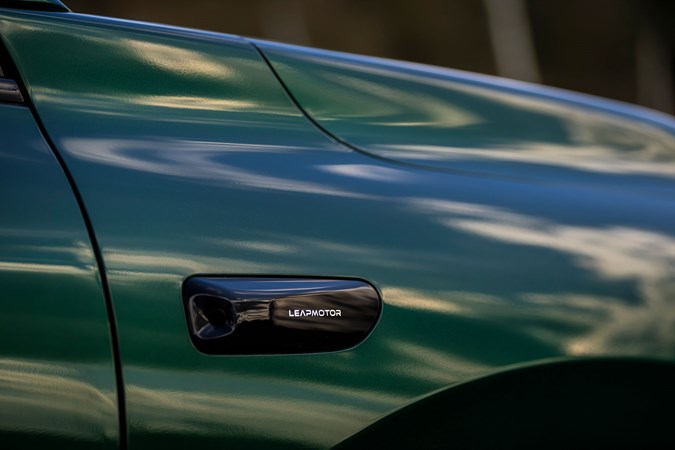
Leapmotor has loaded the C10 with no less than 17 driver assistance functions, including autonomous emergency braking, blind spot monitoring, driver fatigue warning, lane assist and adaptive cruise control. But while these features look great in the brochure, they’re not the easiest to live with in the real world.
I’ve never been forced to stop by a car’s driver assistance technology, but the C10 broke me. I’d barely covered a mile before needing to pull over and disengage the driver attention and lane assist systems (which you can’t do while moving). The car chimed at me once every 10 seconds to alert me of the fact I was falling asleep, and it was convinced I kept straying into oncoming traffic.
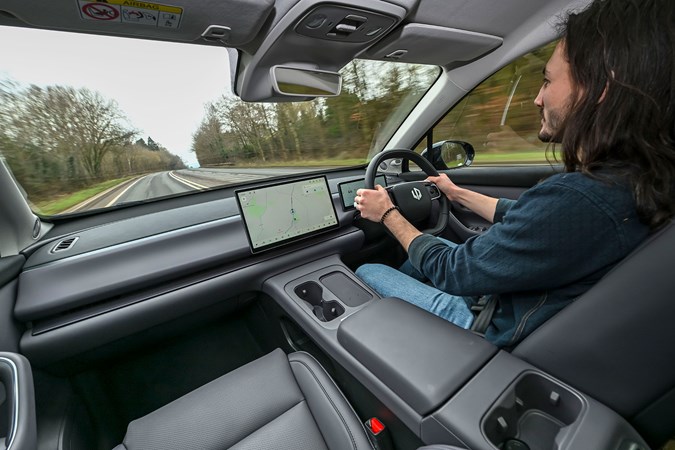
The problem’s made even worse if you wear glasses, as the sensor in the A-pillar can’t read your eye movements properly. You then get a message on the dashboard that reads ‘driver invalid,’ which would be hilarious if it wasn’t accompanied by an orchestra of bongs. It’s deeply irritating. I hope Leapmotor can update it soon.
How does it drive?
It’s not bad for the money, but I’d be much happier at the helm of a similarly priced but less well-equipped Renault Scenic E-Tech. Strangely, though, I don’t think it’d take much more tuning for Leapmotor to fix my main issues with the car.
The Leapmotor C10’s biggest problem is that it feels dense. It’s around 100kg heavier than the Renault Scenic but, from behind the wheel, the weight difference feels two or three times as great due to the way the electric motor has been tuned.
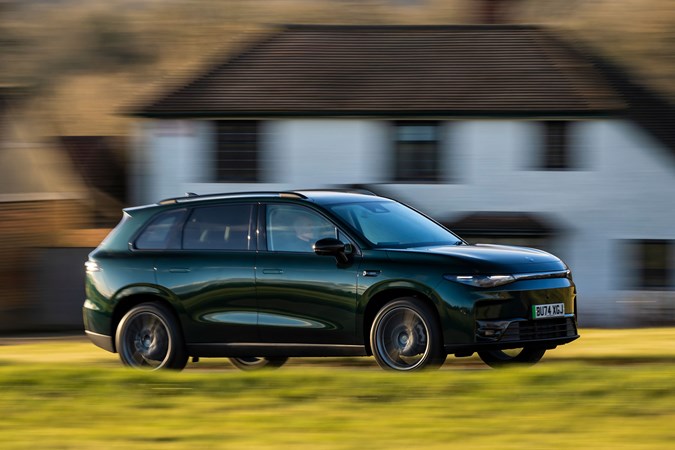
It has 218hp and a claimed 0–62mph time of 7.5 seconds, which is about the same as the Renault. But Leapmotor seems to have calibrated the pedal to feel the power in gradually no matter where you put your foot. I can understand why – this is supposed to be a relaxing, comfortable flagship SUV. But there are times, such as when joining a motorway, when that urgency is welcome. And it’s lacking here.
It’s much the same story with the steering. It’s almost completely devoid of feedback and is alarmingly numb around the centre. That means it’s a breeze to cruise down the motorway, but the second you turn onto a B-road you’ll be constantly misjudging the amount of lock required to get around corners.
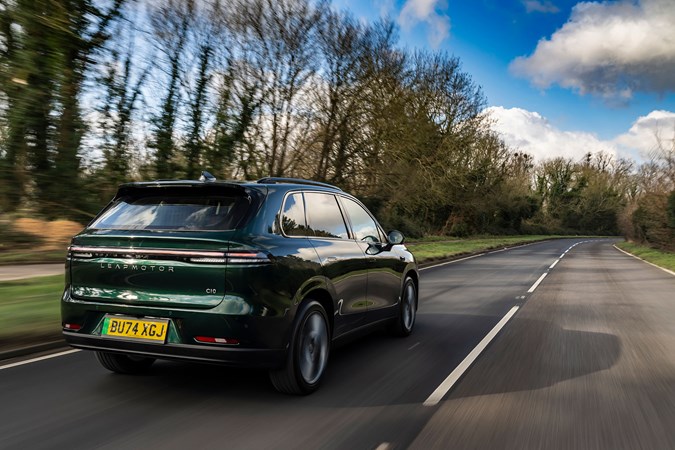
Leapmotor has a very interesting approach to suspension tuning, too. Like most Chinese car makers, it favours very soft springs but rather firm dampers. That means the C10 is quite floaty on a decent road until you hit a bump. Then the chassis will send a shudder through the cabin as the damper struggle to compress quickly enough to absorb the jolt. The payoff is reasonably well controlled body roll for something of this size and weight.
Both me and Seth found the C10’s brakes a little too grabby for comfort, and we were both irritated by the amount of wind noise generated by the car’s A-pillars at high speeds. Overall, it’s fine. But it’s still not quite as good to drive as the Enyaq, EV6 or Scenic.
Range and charging
The C10 is fitted with a 69.9kWh battery that’s surprisingly – almost suspiciously – efficient. At the end of my 70-mile test drive, the car’s trip computer told me I had been averaging 3.4 miles/kWh. That’d put its real-world driving range at 238 miles, which is just 25 miles short of its official WLTP estimate. What makes that even more astounding is that I tested the car in winter, when EV battery packs operate at their worst efficiency.
I see two possible solutions to this conundrum. Either Leapmotor is massively sandbagging the C10’s range predictions or the brand’s engineers have truly managed to out-engineer the likes of Kia, Renault, Stellantis and Volkswagen Group. More testing required, I think. I’m looking forward to pitting it against its rivals soon.

Charge times are average. Leapmotor says the C10 can get from 30 to 80% capacity in around 30 minutes when it’s connected to an 84 DC rapid charger. But the Scenic can accept charging speeds of up to 150kW, while the EV6 can handle up to 350kW.
What models and trims are available?
There’s just the one trim, actually. It does come very well equipped, though. The roof is probably the standout feature, but you normally don’t unlock features like a 360-degree parking camera, 17 driver assistance functions, heated steering wheel and an enormous touchscreen until you hit the upper echelons of a car’s model range. Not with C10.
For £36,500, it strikes me as a bit of a bargain. Is it as refined as a Renault Scenic or Skoda Enyaq on the road? Certainly not, but it’s comfortable enough and, by virtue of its generous equipment list, some of its shortfalls can be forgiven.
Perhaps the only thing I’d like to see is a little more customisation. Elsewhere in the world, buyers can specify their C10 with a cognac-like upholstery finish, which I think would look great underneath the green paint you see on the car in these images. Sadly, the only option we get in the UK is a purply-blue finish.



